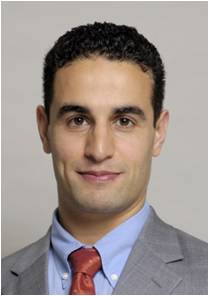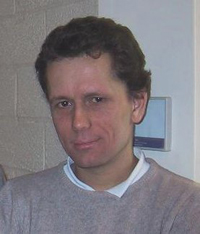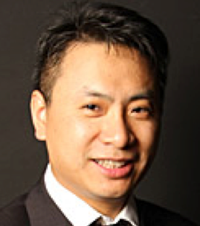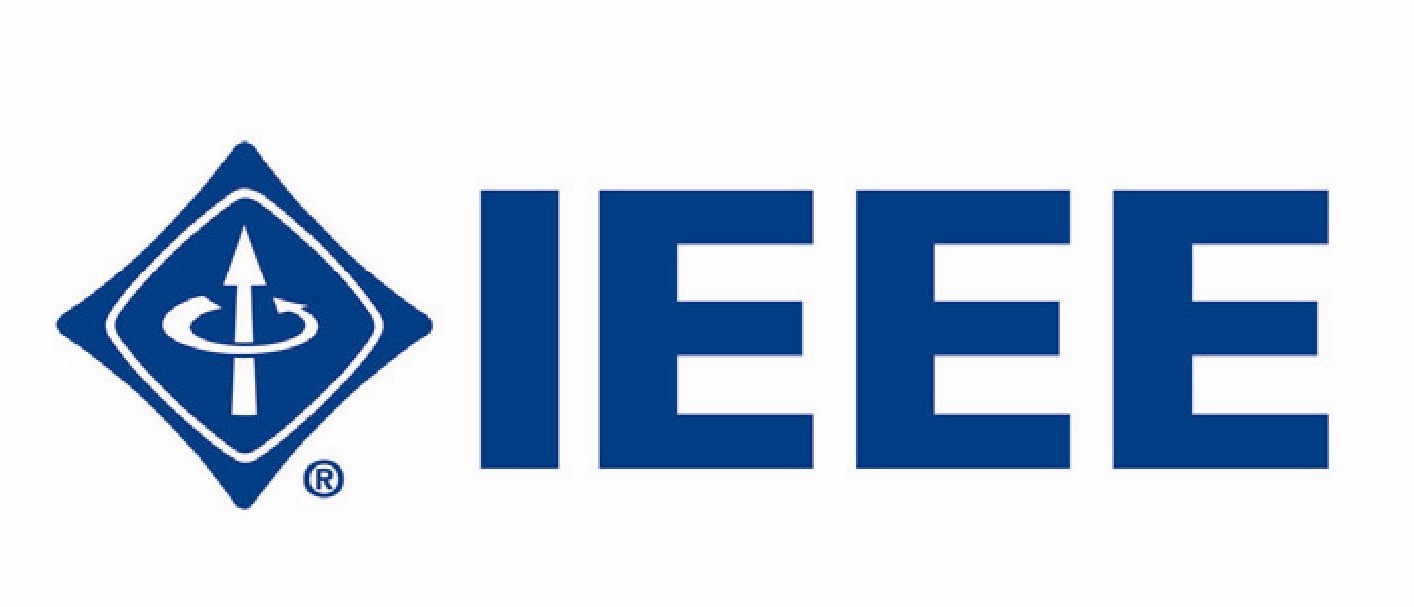Keynote Speakers
 |
Radia Perlman
|
| Abstract
Everyone introduces the ISO reference model of networks with
the 7 layer model. We are told that IP
is layer 3 and Ethernet is layer 2. What does that mean, really? And
what, exactly, is Ethernet? It bears
little resemblance to the CSMA/CD protocol invented decades ago. This
talk discusses the evolution of
Ethernet, from CSMA/CD to spanning tree, and now TRILL. Now that TRILL
is routing Ethernet, even using
basically the same protocol as is used in many ISPs for routing IP,
why isn't Ethernet considered a layer 3
protocol? And why do we need both Ethernet and IP? We examine these
mysteries, along with how a bunch of new
proposed protocols, such as NVGRE, VXLAN, and shortest paths bridging relate. |
|
 |
Charlie Kaufman
|
| Abstract Engineering a network for a large public cloud computing facility presents some unique challenges. Addressable entities like virtual machines need to migrate from place to place while keeping their network connections alive, which would tend to require a highly dynamic routing algorithm with fast convergence. But a primary goal of cloud computing is to reduce costs by pushing all components to their limits, which means maximizing bandwidth, avoiding bottlenecks, and load splitting across parallel paths - all of which argues for a highly tuned highly static configuration. Security challenges take on new forms in a public cloud because the attackers may be inside your network and you can't profile what are "normal" usage patterns because your customers don't have to tell you what they are doing. Even diagnosing problems can be made difficult because you have to respect the privacy of your customers even as you try to determine whether they are trying to intentionally harm your network. |
|
 |
Tarik Taleb
|
Abstract Mobile operators are in need of means to cope with the ever-increasing mobile data traffic, introducing minimal additional capital expenditures on existing infrastructures, principally due to the falling Average Revenues per User (ARPU). Network vitalization and cloud computing techniques, along with the principles of the latter in terms of service elasticity, on-demand, and pay-per-use, could be important enablers for various mobile network enhancements and cost reduction. This keynote will touch upon the recent trends the mobile telecommunications market is experiencing, showcasing some of the emerging consumer products that are facilitating such trends. The keynote will also discuss the challenges these trends are representing to mobile network operators. The keynote will then touch upon the possibility of extending cloud computing beyond data centers towards the mobile end-user, providing end-to-end mobile connectivity as a cloud service. The keynote will introduce a set of technologies and methods for the on-demand provision of a decentralized and elastic mobile network as a cloud service over a distributed network of cloud-computing data centers. The novel business opportunities behind the envisioned mobile cloud architecture and service will be also discussed, considering various multi-stakeholder scenarios. The concept of Follow-Me-Cloud whereby not only data but also mobile services are intelligently following their respective users will be also introduced. Biography His research interests lie in the field of architectural enhancements to 3GPP networks (i.e., LTE), mobile cloud networking, mobile multimedia streaming, wireless and ad-hoc networking, inter-vehicular communications, satellite and space communications, congestion control protocols, handoff and mobility management, and network security. His recent research has also focused on on-demand media transmission in multicast environments. Dr. Taleb is also directly engaged in the development and standardization of the Evolved Packet System as a member of 3GPP's System Architecture Working Group. Dr. Taleb is on the editorial board of the IEEE Transactions on Vehicular Technology, IEEE Wireless Communications Magazine, IEEE Communications Surveys & Tutorials, and a number of Wiley journals. He is serving as secretary of the Wireless Communications Technical Committee, the largest in IEEE Communications Society (ComSoc). He also served as Secretary and then as Vice Chair of the Satellite and Space Communications Technical Committee of the IEEE Communication Society (ComSoc) (2006 - 2010). He has been on the technical program committee of different IEEE conferences, including Globecom, ICC, and WCNC, and chaired some of their symposia. He is the recipient of the 2009 IEEE ComSoc Asia-Pacific Young Researcher award (Jun. 2009), the 2008 TELECOM System Technology Award from the Telecommunications Advancement Foundation (Mar. 2008), the 2007 Funai Foundation Science Promotion Award (Apr. 2007), the 2006 IEEE Computer Society Japan Chapter Young Author Award (Dec. 2006), the Niwa Yasujirou Memorial Award (Feb. 2005), and the Young Researcher's Encouragement Award from the Japan chapter of the IEEE Vehicular Technology Society (VTS) (Oct. 2003). Dr. Taleb is a senior IEEE member. |
|
 |
David Bernstein
|
|
Abstract Unlike the "telephony cloud", the "compute and storage clouds" are currently not run by the Telcos, and as a result they are decidely not interoperable or roamable. They also don't function at all like a utility in the regulated sense, slowly becoming more evil as alternatives simply don't exist. Or don't they? This talk speaks to the forces at work in the marketplace and using historical analogies, predicts that the Telcos will become huge Cloud players and that the Intercloud will be as much a game-changer in Cloud Computing as the Internet was to the online services of the 80's. The talk goes on to detail the IEEE P2302 Intercloud Standard and Testbed project, which came out of the predictions of this market dynamic. The standard is now in first working draft, and will be explained in some detail, including the root and exchange architecture, the conversational substrate protocols, the semantic services directory and semantic services matching solver approaches, and so on. The emerging IEEE Intercloud testbed will also be detailed. The talk concludes with ways that interested attendees can participate in the standard or the testbed. Biography |
|
Tutorial speakers | |
 |
Olivier Bonaventure
|
| Abstract
The Transmission Control Protocol (TCP) is used by the vast majority of applications to transport their data reliably across the Internet and in the cloud. TCP was designed in the 1970s and has slowly evolved since then. Today's networks are multipath: mobile devices have multiple wireless interfaces, datacenters have many redundant paths between servers, and multihoming has become the norm for big server farms. Meanwhile, TCP is essentially a single-path protocol: when a TCP connection is established, the connection is bound to the IP addresses of the two communicating hosts and these cannot change. Multipath TCP (MPTCP) is a major modification to TCP that allows multiple paths to be used simultaneously by a single transport connection. Multipath TCP circumvents the issues mentioned above and several others that affect TCP. The IETF is currently finalising the Multipath TCP RFC and an implementation in the Linux kernel is available today. This tutorial will present in details the design of Multipath TCP and
the role that it could play in cloud environments. We will start with a
presentation of the current Internet landscape and explain how various
types of middleboxes have influenced the design of Multipath TCP. Second
we will describe in details the connection establishment and release
procedures as well as the data transfer mechanisms that are specific to
Multipath TCP. We will then discuss several use cases for the deployment
of Multipath TCP including improving the performance of datacenters,
Olivier Bonaventure received several awards as a researcher (Alcatel-Bell prize, IEEE INFOCOM 2007 best paper award, USENIX NSDI 2012 community award) and teacher (Wernaers prize for the development of online courses, Saylor.org prize for the open textbook Computer Networking : Principles, Protocols and Practice). He currently serves on the editorial board of IEEE/ACM Transactions on Networking, on the steering committee of ACM Conext, chairs the IEEE Internet award committee and is education Director of ACM SIGCOMM. |
|
 |
Dijiang Huang
|
Abstract Software Defined Networking (SDN) is an emerging research area that has attracted a lot of attention from academia, industry, and government. It is an innovation that allows us to control and program the network in a way to make it responsive to networking events in a more proactive fashion., for example, events caused by vulnerability explorations and security breaches, Biography Dr. Huang is an associate editor of the Journal of Network and System Management (JNSM) and an editor of the IEEE Communications Surveys & Tutorials. He has served as an organizer for many International conferences and workshops. Dr. Huang’s research is supported by NSF, ONR, ARO, Intel, and HP. He is a recipient of ONR Young Investigator Program (YIP) Award 2010 and HP Innovation Research Program (IRP) award 2011 and 2012. He is a senior member of IEEE. |
|









